Summer vacation, and we spent almost a week in Hanoi. It's not the first time in Vietnam, as we went to Ho-Chi-Minh city almost six years ago, but it's the first time in Hanoi. We've been to Kuala Lumpur and we spent new Year in Bangkok last winter, but Vietnam feels distinctly different from other Asian countries we've visited. It's more mentally tiring than any other place I've been, but perhaps also more rewarding.
The Old Quarter. For whatever reason, Hanoi works much better with black and white shots than Bangkok did. The light is more subdued and colours a bit more muted.
We stayed in the Old Quarter, where the original narrow street layout is retained and most buildings are, if not old, then at least very much looking the part. The area merchants are mostly organized by street, so you'd find hardware stores lining up along one street, a cluster of cafes on another, and kitchen supplies spilling out on the sidewalk on a third. There's plenty of tourists around — the south end near the Hoan Kiem lake is a bit of a tourist trap — but it still feels very much like a living, breathing part of the city.
Funeral plaques along the funeral street. I suspect these are samples, not actual customers. This, by the way, is the only place I saw kanji still in use, and even here each character is annotated with the Vietnamese pronunciation.
Hardware store, along the hardware store street. Half the merchandize spills out onto the sidewalk. I did get a couple of steel brushes and a ruler.
The traffic is the same chaotic mess we remember from Ho-Chi-Minh City, where nobody cares much for traffic rules and nobody stops for anybody else; though in a nod to basic self-preservation people mostly do stop for red lights in large intersections. Mostly. You cross a street by stepping right out in traffic and calmly — and predictably — walk across while bikes and cars zip by close enough to touch.
Many people drive small bikes, though there's a fair number of cars too. There's only a few bicycles, and I can't blame anyone for not risking life and limb in this environment. The bikes are mostly new or well maintained, and there's some electric bikes around as well. While they're somewhat rare (one bike in 20 or 40 perhaps) they're often driven by younger, trendier-looking female drivers. Helmets are common but far from ubiquitous.
A young woman and a child on an electric bike. Sadly, being trendy seems to mean not using a helmet.
The traffic does work, in the sense that there's no gridlock and you do get around. But a quick check on Wikipedia shows that Vietnam has a fatality rate of 24.4 people per 100 000, almost five times that of Japan. Hard to say if it's the large number of bikes (much more likely to be in an accident) or the lack of rules, but in any case driving here is something to avoid if you can.
Hanoi weather is unpredictable and wet. People know this and are well prepared. But being prepared is not the same thing as enjoying it.
Calypso Grabd Hotel is a boutique hotel, just six stories high with about three rooms per floor. The rooms are spacious and airy, and seem to have been renovated fairly recently. The room facilities, faucets and so on are clearly chosen for their design as much as their utility — we actually had to ask the front desk for help a couple of times when we failed to figure out how things worked on our own. The service was friendly and professional the whole time we spent there.
Wifi access quality was a bit hit and miss, but it was tolerable. The breakfast is really good; you have a small buffet of bread, fruits and so on, and you can order any number of light meals from pho to BLT sandwiches. I'm partial to soups in the morning but rarely get the chance, so a bowl of pho was pretty much a perfect way to start the day for me.
We came right on the day of the Mid-autumn festival, a yearly childrens festival. Hordes of people, many of them kids, thronged all over the area. The chaos and noise didn't exactly help with the initial culture shock.
The autumn festival brings out an insane amount of people onto the narrow streets. The weather is unpredictable; when a sudden rainstorm appeared, everybody cleared out and escaped to the sidewalks within seconds. The rain stopped a few minutes later, and the crowds poured right back out on to the streets again. People are used to the weather here, I guess.
This must the time of year for weddings — or perhaps it's the festival weekend — but around the Opera house, Hilton hotel and Hoan Kiem lake there were a lot of wedding photographers and couples in wedding dress out on photo shoots. And when I say "a lot" I mean that we must have seen more than a hundred couples in the span of a few hours.
The wedding couples here — along with the multiple couples in the background — are taking wedding pictures in front of the Hilton hotel. And no, they did not seem to be part of the same group or anything like that.
The single greatest event for us was a half-day cooking class at Hanoi Cooking Centre. It's a school and cafe north of Old Town, with a range of classes and events; we took the "food from the coast" class.
We were seven students in all - a couple from the US; a photographer and his twin daughters from New Zealand; and me and Ritsuko from Japan. The teacher first took us to the nearby market where he introduced the ingredients common in Vietnamese cooking; after asking if anyone would like to try it, he also got a duck egg with a chick inside and some live grubs for us to taste later.
The class was hands-on (not always the case elsewhere, apparently, so check beforehand), where the teacher first demonstrated how to do a part of the dish, giving us useful pointers along the way, then we tried it ourselves at our tables. We cooked for four hours, but it felt like no more than an hour or so. Time really flies when you're having fun.
We made four dishes in total: prawn, pork and rice rolls, clams steamed in beer, squid cakes and a crab and pomelo salad. The prawn was great — we've made it twice at home since — and the squid cakes and pomelo salad are also really good. The steamed clams need something to offset the tartness of the beer, though.
Meanwhile the teacher prepared the duck egg and the live grubs. The grubs were straightforward: quickly fried in a hot skillet, then flambéd before serving with a glass of beer. A nice soft and spicy snack.
I was rather more nervous about the duck egg. It was boiled for 20 minutes — it's a meat dish, so it needs the time — then peeled. I needn't have worried. The chick is still very immature and hasn't even developed bones yet, so it's pretty much unrecognizable; it's just a bite-sized chunk of duck meat. And slow-cooked in its own juices for twenty minutes it becomes very juicy, tender and flavourful — delicious, in fact. It's popular as a late-night street snack, and no wonder. If I get the chance I will certainly have this again.
Food is a central theme for us when we travel. We choose our destinations based on the cuisine (if you've seen one historical site you've seen them all), and our planning revolves around what, where, and when to eat. And Vietnam has an abundance of foods.
Bun Bo — rice noodles with beef and lots of vegetables — at a street-side restaurant. Possibly my favourite meal of the trip.
Lunch at an Indian restaurant. Dosa, curry and rice. There's a fair amount of good international restaurants around if you want a break from the Vietnamese for a day. Also, we try to have Indian anywhere we go, just for comparison.
Bia Hoi is known as the cheapest beer in the world, at about 4-5000 dong or 25 yen per glass. It's brewed literally overnight, shipped out in steel barrels in the morning and any left-overs are thrown away by closing time since it doesn't keep. It's mostly served at street-side cafes, not in "real" bars or restaurants. To my surprise it's not just cheap, it's quite good. It has a very fresh, raw kind of grassy flavour that's really refreshing. If you could find a way to store that flavour in a regular beer I bet it would sell well.
A lot of life in the Old Quarter happens right on the street. Restaurants, cafes and shops spill out onto the sidewalks, along with parking, storage and displays. People use the smaller streets to ply a trade, play games, having a party or just relax with their neighbours, even as a steady stream of bikes weave right among them. Alleyways are effectively people's back yards.
Air fan repair business. He's got the tools and stock inside, but works outside on the sidewalk. In part because of lack of space, in part to socialize with other shop owners, but it probably also helps promote the business; people can just stop and ask about repairs without even having to enter the store.
An evening game of Xiangqi — Chinese-style chess — on the sidewalk. It seems a lot of regular life happens out in public rather than indoors. I'm curious if that's the case in winter as well, though.
Hoan Kiem is a lake south of the Old Quarter, surrounded by a large park. It's a great relief to take a walk around the lake after fighting through the narrow streets of Old Quarter or the busy thoroughfares of the modern city. You're not the only one with that idea of course, so it's not exactly quiet, but it's still relaxing, especially at night.
There's a temple on a tiny island in the lake, connected with a red wooden bridge. This has got to be one of the most photographed spots in the city.
The modern parts of the city are more orderly than the Old Quarter, but there's still the same sense of private and public spaces intermingling in a way that feels very foreign — in a good way — to someone from Japan or Sweden. I hope this attitude doesn't disappear, and perhaps even spreads a little to other societies.
A huge tree shades an apartment block. Very soothing. There's a lot of greenery throughout Hanoi, much more than in Osaka, and it contributes to the calm, airy atmosphere despite the busy, noisy streets.
No place has left such a strong impression on me as Hanoi. The sounds, the smells, the light is all very different from anywhere else I've been, and I'm still reminded by it more than a month after we came back. We will visit Vietnam again, and soon. The whole set of Vietnam images is available here.
Vietnam Airlines allow up to 40kg even for economy passengers. So we brought a few things back. The aprons are from the cooking school and really good quality; made by a Swedish company that makes protective clothing. We got various coffee beans, noodles, wine, jam, cookies, sweets, cutting boards, cookbooks, pillow cases and lots of other things. Including some cute cloth frogs — they're all clearly visible in this picture but not easy to find. Have a go at counting them if you like.

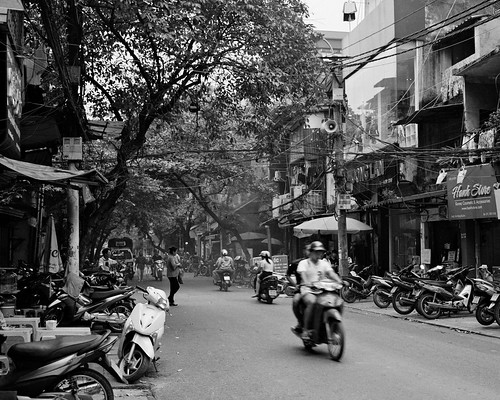
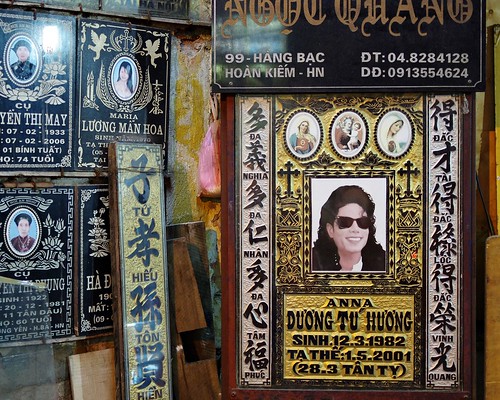
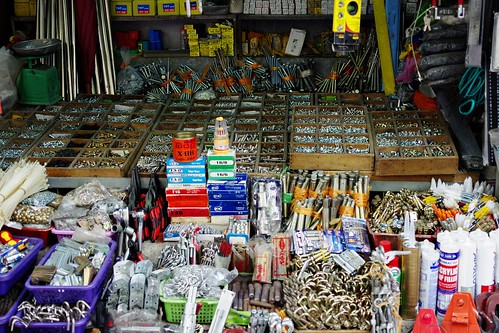
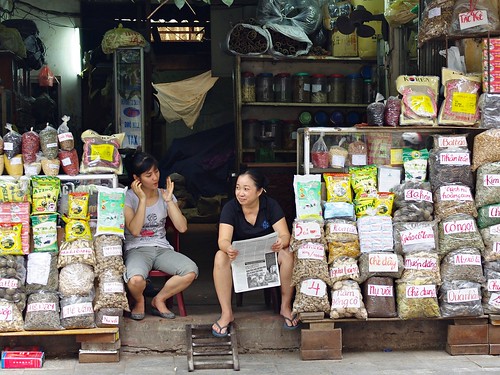
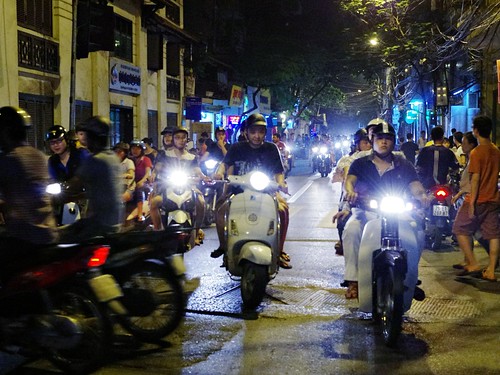
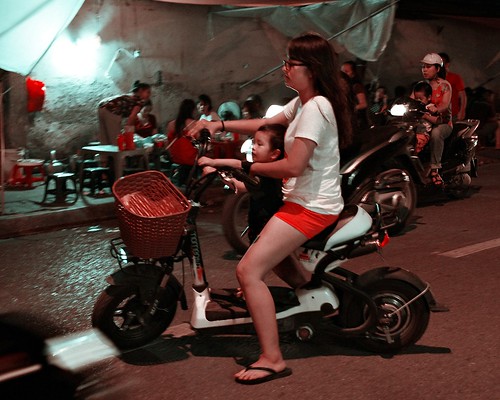

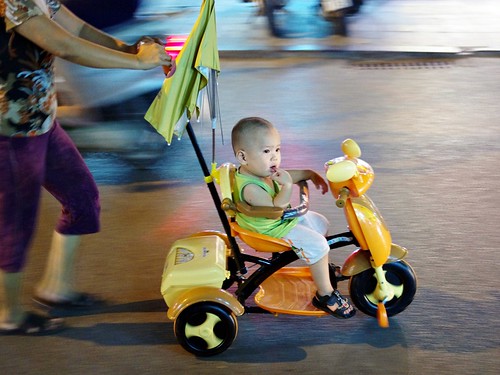

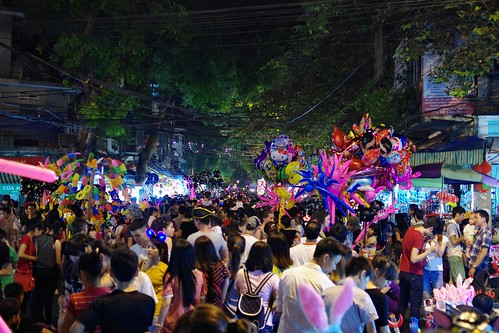
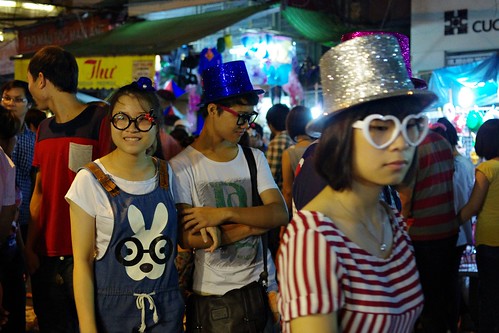

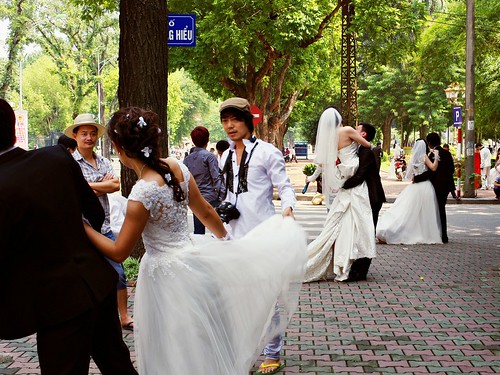
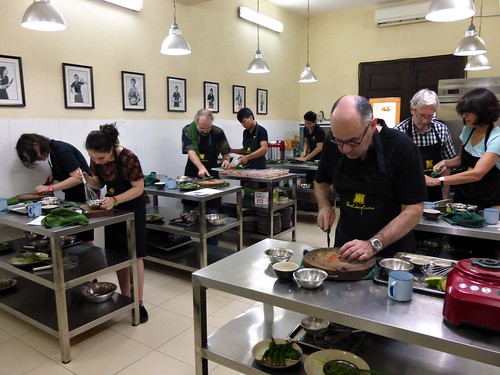

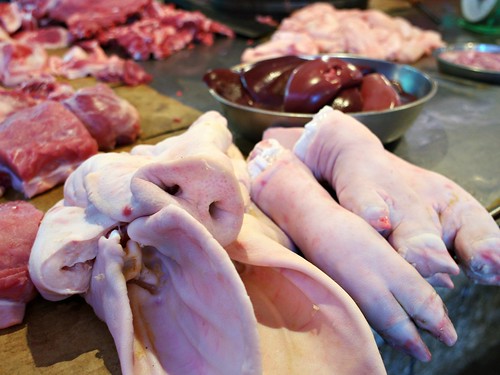

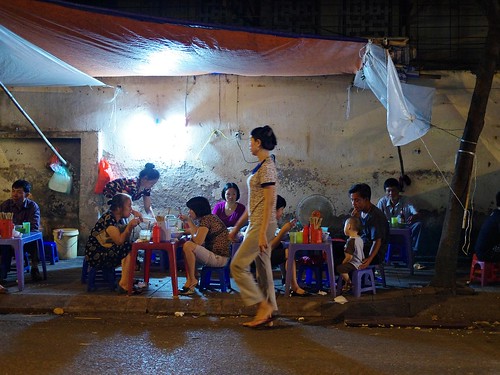
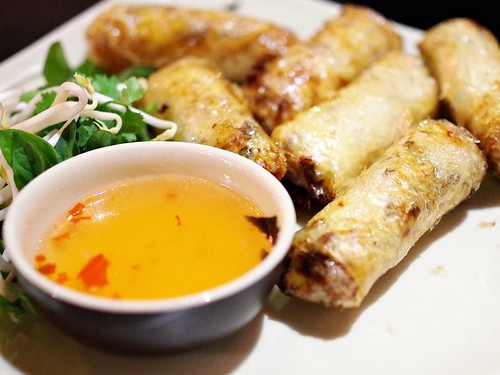
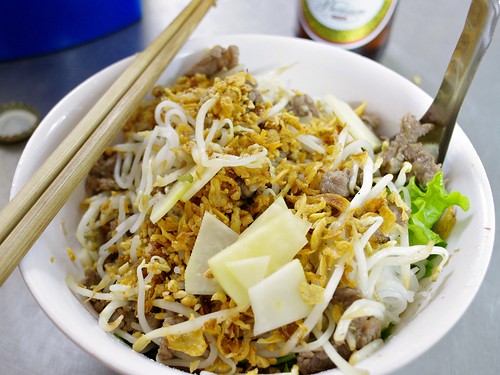
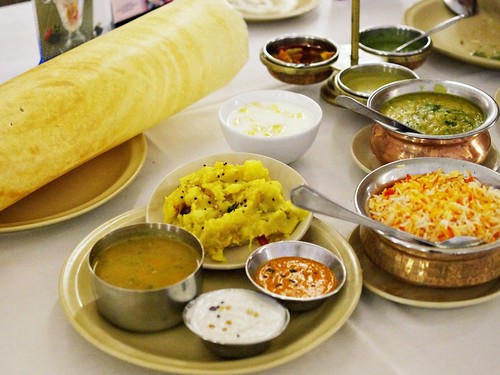
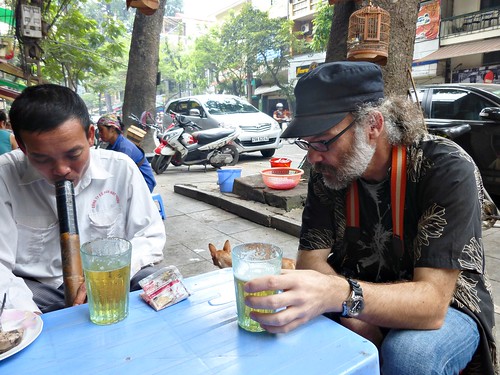
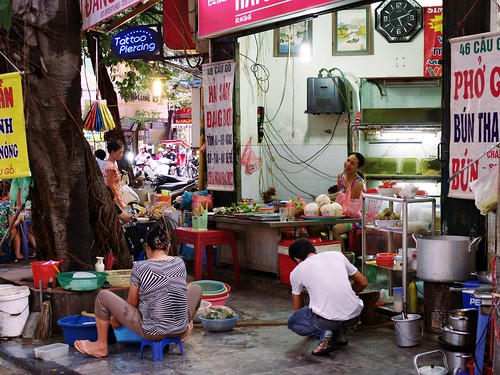
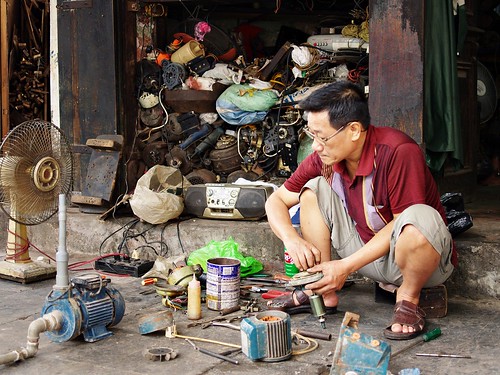
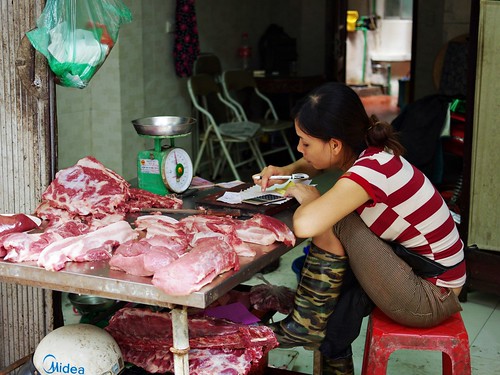



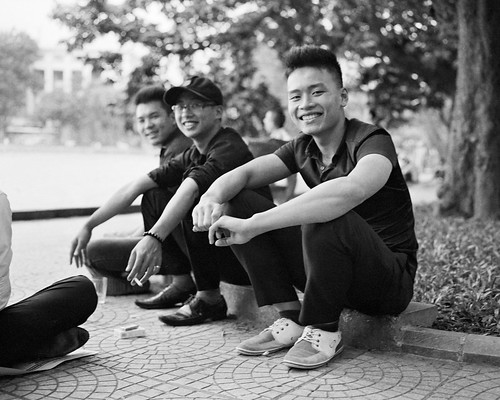
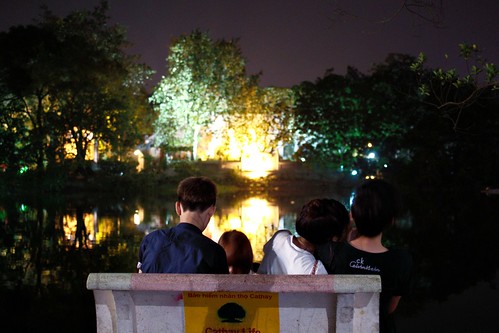
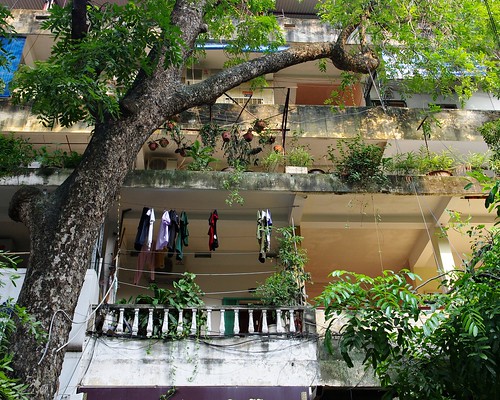
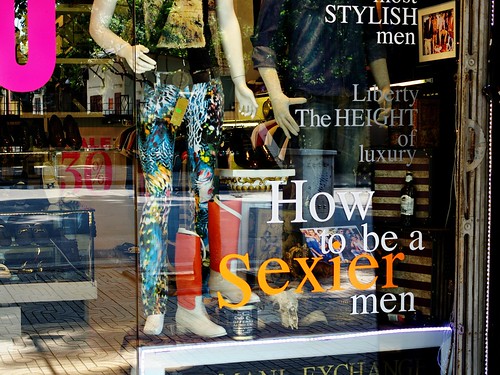
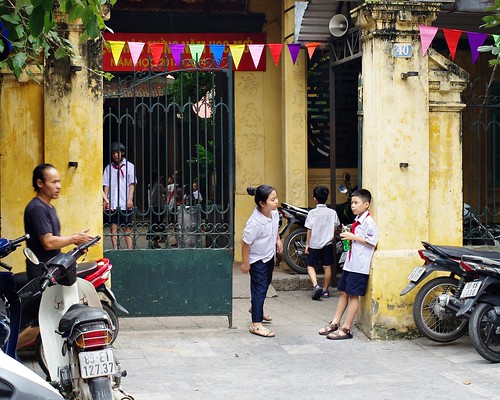
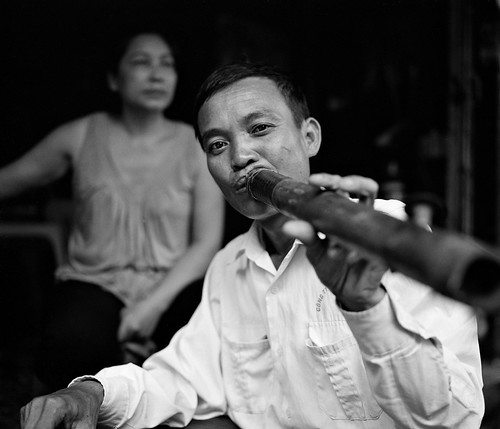
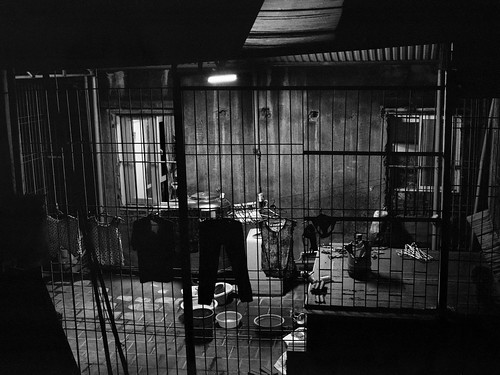
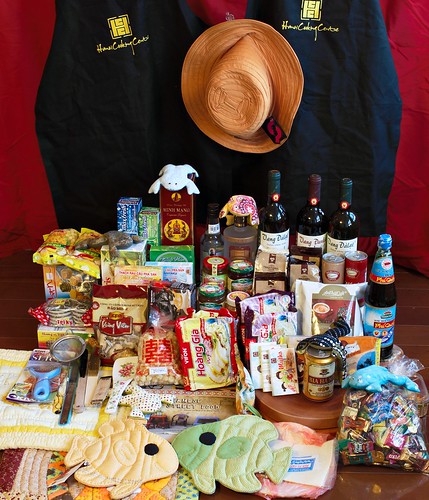
No comments:
Post a Comment
Comment away. Be nice. I no longer allow anonymous posts to reduce the spam.